
Eat That Frog หรือ กินกบตัวนั้นซะ เป็นหนังสือที่เขียนโดย Brian Tracy ที่สามารถนำมาเป็นคู่มือสร้างการเปลี่ยนแปลงให้กับตัวเราเองในการเอาชนะการผัดวันประกันพรุ่ง หรือ การเพิ่มประสิทธิภาพการทำงาน เพื่อให้เราสามารถบรรลุความสำเร็จทั้งส่วนตัวและทางอาชีพได้
ในหนังสือเล่มนี้ มีการแนะนำกลยุทธ์เชิงปฏิบัติสำหรับการบริหารเวลาอย่างมีประสิทธิภาพ โดยเน้นการให้ความสำคัญของการจัดลำดับความสำคัญ การตั้งเป้าหมาย และความมุ่งมั่นที่จะลงมือทำเพื่อเปลี่ยนแปลงตนเอง
ผู้เขียนได้ใช้คำอุปมาอุปไมย นั่นก็คือ “การกินกบ” เป็นการเปรียบเทียบเปรียบเปรย โดยเขาแนะนำให้จัดการกับงานที่ท้าทายที่สุดก่อน และนำเสนอขั้นตอนที่นำไปปฏิบัติได้เพื่อเอาชนะการผัดวันประกันพรุ่งและเพิ่มประสิทธิภาพในการทำงานได้ นอกจากนี้ยังมีเทคนิคอื่นๆ ที่สามารถนำมาใช้ร่วมกันได้ อาทิเช่น Eisenhower Matrix, เป้าหมาย SMART และ Pomodoro Technique เพื่อทำให้การทำงานของสามารถควบคุมเวลาได้ ทำให้งานของเราราบรื่นและบริหารจัดการได้ง่ายยิ่งขึ้น
ต่อไปนี้เป็นบทเรียนสำคัญ 10 บทเรียน ที่ได้เรียนรู้จาก หนังสือ “Eat That Frog หรือ กินกบตัวนั้นซะ” ที่จะปฏิวัติแนวทางการบริหารเวลาของเราไปตลอดกาล โดยที่พวกเราสามารถนำไปใช้กับงานและชีวิตจริงของเราได้:
บทเรียนที่ 1: การเรียนรู้ศิลปะแห่งการจัดลำดับความสำคัญ
“ถ้าต้องกินกบสองตัว ให้กินตัวที่น่าเกลียดที่สุดก่อน”
ในโลกที่วุ่นวายของการทำงาน การจัดลำดับความสำคัญของงานจึงเป็นเรื่องที่สำคัญมาก เราสามารถใช้ Eisenhower Matrix ตามภาพประกอบด้านล่าง เพื่อมาช่วยในการจัดลำดับ จัดหมวดหมู่ และ ช่วยให้เรามุ่งเน้นไปที่งานที่มีความสำคัญอย่างแท้จริง
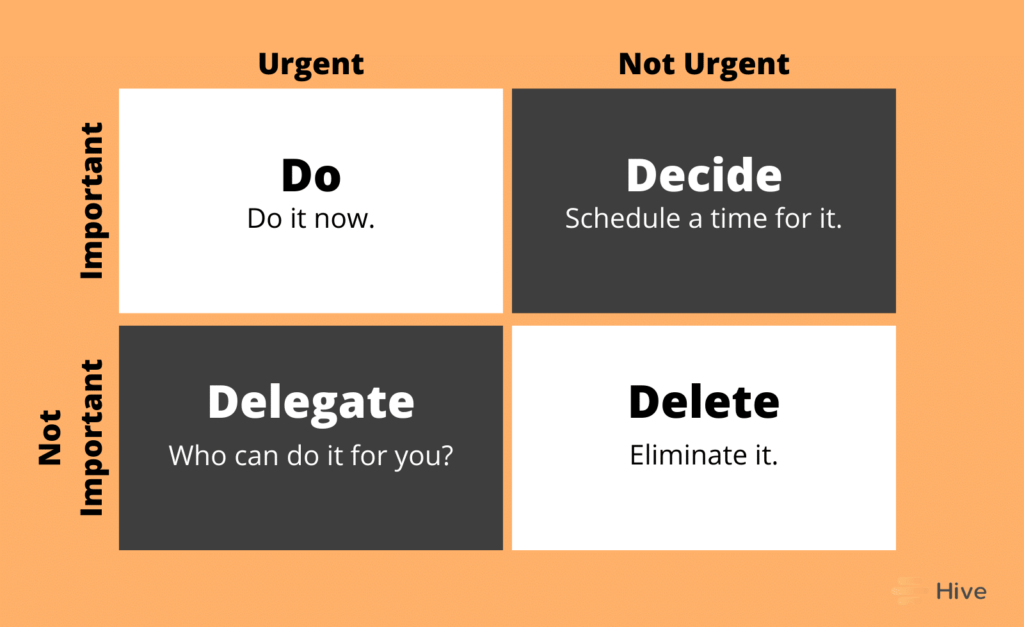
ตัวอย่าง:
หากถามว่า เรามีกี่งานในมือ และ งานไหนสำคัญที่สุด หรือ งานไหนต้องทำก่อน? หากเจอคำถามแบบนี้อาจจะตอบยาก หรือ อาจจะตอบผิดได้ แต่ถ้าเราซึ่งถือ Eisenhower Matrix อยู่ในมือ และในนั้นมีรายละเอียดของหัวข้อเรื่องงานที่เราได้มีการแบ่งหมวดหมู่เอาไว้อย่างชัดเจนว่า งานไหนเป็นงานเร่งด่วนและสำคัญ งานไหนไม่เร่งด่วนแต่สำคัญ งานไหนเร่งด่วนแต่ไม่สำคัญ และ งานไหนไม่เร่งด่วนไม่สำคัญ เราก็จะพบความชัดเจน และทำให้มั่นใจว่าความพยายามของเราในการเคลียร์งานนั้นสอดคล้องกับเป้าหมายโดยรวมของเราที่ได้วางเอาไว้
บทเรียนที่ 2: การตั้งเป้าหมาย SMART เพื่อความสำเร็จ
“เป้าหมายคือเชื้อเพลิง ในเตาไฟแห่งความสำเร็จ”
เป้าหมายจะไม่เป็นเพียงแรงบันดาลใจอีกต่อไป เมื่อพวกเรายึดหลัก SMART: เฉพาะเจาะจง วัดผลได้ บรรลุผลได้ เกี่ยวข้อง และมีกำหนดเวลา ตั้งเป้าหมายให้จับต้องได้ และมีแนวทางที่จะพาตัวเราไปให้ถึง
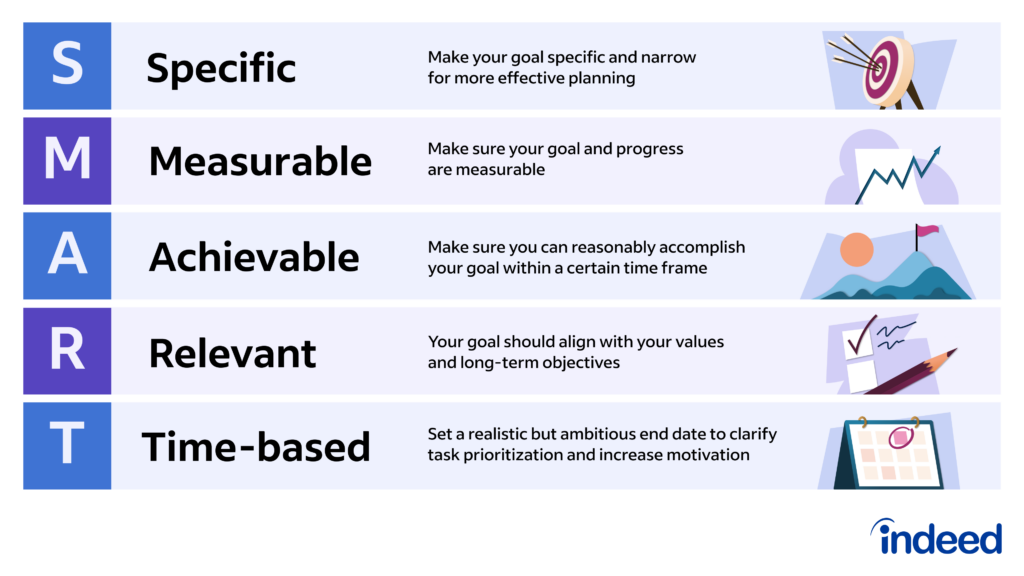
บทที่ 3: เอาชนะการผัดวันประกันพรุ่งด้วยเทคนิค Salami Slice
“ความสามารถในการมุ่งความสนใจไปที่งานที่สำคัญที่สุดของเราอย่างแน่วแน่ ทำมันให้ดี และทำมันให้สำเร็จสมบูรณ์ ถือเป็นกุญแจสู่ความสำเร็จ และความสุขในชีวิต”
การผัดวันประกันพรุ่งซึ่งเป็นศัตรูตลอดกาลของมนุษย์ เราสามารถแก้ปัญหานี้ได้ด้วยเทคนิค Salami Slice เทคนิคนี้ก็อาศัยหลักการง่ายๆ ก็คือ มองงานเป็นก้อนใหญ่ๆ เหมือนแท่ง Salami เพื่อให้งานย่อยได้ง่าย ทำได้ง่าย เราก็ทำการแบ่งงานออกเป็นชิ้นขนาดพอดีคำ ก้เหมือนกับเอามีดมาหั่นงานก่อนใหญ่ออกเป็นชิ้นเล็กๆ พอดีคำก็หมายถึงเล็กจนเราสามารถทำได้ไม่ยากนั่นเอง การทำแบบนี้จะทำให้อาการอิดออด กลัว หรือ กังวลกับงาน ก็จะลดลงไปได้

ตัวอย่าง:
ไม่ว่าเราจะต้องเจอกับโครงการหรืองานใหญ่แค่ไหน หากเราเอา เทคนิค Salami Slice ไปลองใช้ ทำให้งานชิ้นใหญ่ ถูกหั่นออกเป็นชิ้นเล็กๆ แล้วเราก็เริ่มจัดการเจ้าชิ้นเล็กๆ ที่ละชิ้นไปเรื่อยๆ เราก็สามารถเปลี่ยนการผัดวันประกันพรุ่งให้เป็นความก้าวหน้าได้แล้ว
บทเรียนที่ 4: ใช้ Time Blocking อย่างมีประสิทธิผลเพื่อประสิทธิภาพสูงสุด
“กบ” ของคุณคืองานที่ใหญ่ที่สุดและสำคัญที่สุดของเรา เป็นงานที่เรามักจะผัดวันประกันพรุ่ง ถ้าเราไม่ทำอะไรกับมัน”
Time Blocking คือ การแบ่งเวลาออกเป็นบล็อก ๆ แล้วกำหนดล่วงหน้าว่าเวลาไหนเราจะต้องทำอะไร ทำตอนไหน และต้องทำนานเท่าไหร่? การใช้ Time Blocking ถือเป็นอีกหนึ่งกลยุทธ์ในการจัดสรรเวลาของเรา เราจะได้มีสมาธิจดจ่อกับงานและได้ใช้ประสิทธิภาพในการทำงานได้อย่างเต็มที่
บทเรียนที่ 5: การเอาชนะอุปสรรคจากการทำงานหลายอย่างพร้อมกัน
“เราไม่มีเวลาพอที่จะทำทุกอย่าง แต่เรามีเวลาเพียงพอเสมอในการทำสิ่งที่สำคัญที่สุด”
การทำงานหลายอย่างพร้อมกัน หรือ multitasking ซึ่งมักถูกยกย่องว่าเป็นทักษะที่มนุษย์ยุคนี้จำเป็นต้องมี แต่การทำแบบนี้บ่อยๆ ก็หนีไม่พ้นที่จะต้องเจอกับความผิดพลาดได้ง่ายเช่นกัน แทนที่งานจะออกมาได้ดี แต่อาจจะเสียหายผิดพลาทุกงานก็ได้ ดังนั้นควรใช้หลักการจัดลำดับความสำคัญ และมุ่งมันจัดการทีละงานจะดีกว่า เพื่อประสิทธิภาพที่ดีที่สุดและผลลัพธ์ที่ดีที่สุด อย่าลืมว่า คุณภาพสำคัญกว่าปริมาณ
บทเรียนที่ 6: การใช้กฎ 2 นาทีเพื่อชัยชนะอย่างรวดเร็ว
“ยิ่งเรามีวินัยในการใช้เวลาให้ดี เราจะรู้สึกมีความสุขมากขึ้น และคุณภาพชีวิตของเราก็จะดีขึ้นในทุกๆ ด้าน”
กฎ 2 นาที เป็นวิธีการฝึกวินัยให้กับตัวเองง่าย ๆ ด้วยแนวคิดที่ว่า อะไรก็ตามที่ใช้เวลาทำไม่ถึง 2 นาที ให้ลงมือทำไปเลยทันที ถือเป็นวิธีการที่มีประสิทธิภาพ ส่งเสริมทำให้งานด่วนเสร็จสิ้นทันที ความสำเร็จแบบเล็กๆ นี่แหละที่จะทำให้เรามีกำลังใจทำงานถัดไปได้ง่ายขึ้น ดังนั้นหากเราใช้ กฎ 2 นาที กับงานที่เราทำในทุกๆ วัย มันจะช่วยเสริมความรู้สึกถึงความสำเร็จและขับเคลื่อนเราต่อไปข้างหน้าได้
บทเรียนที่ 7: การใช้หลักการพาเรโต (กฎ 80/20)
“คนที่ประสบความสำเร็จ มักจะมองหาโอกาสในการช่วยเหลือผู้อื่น คนที่ไม่ประสบความสำเร็จมักจะถามว่า ฉันมีประโยชน์อะไร”
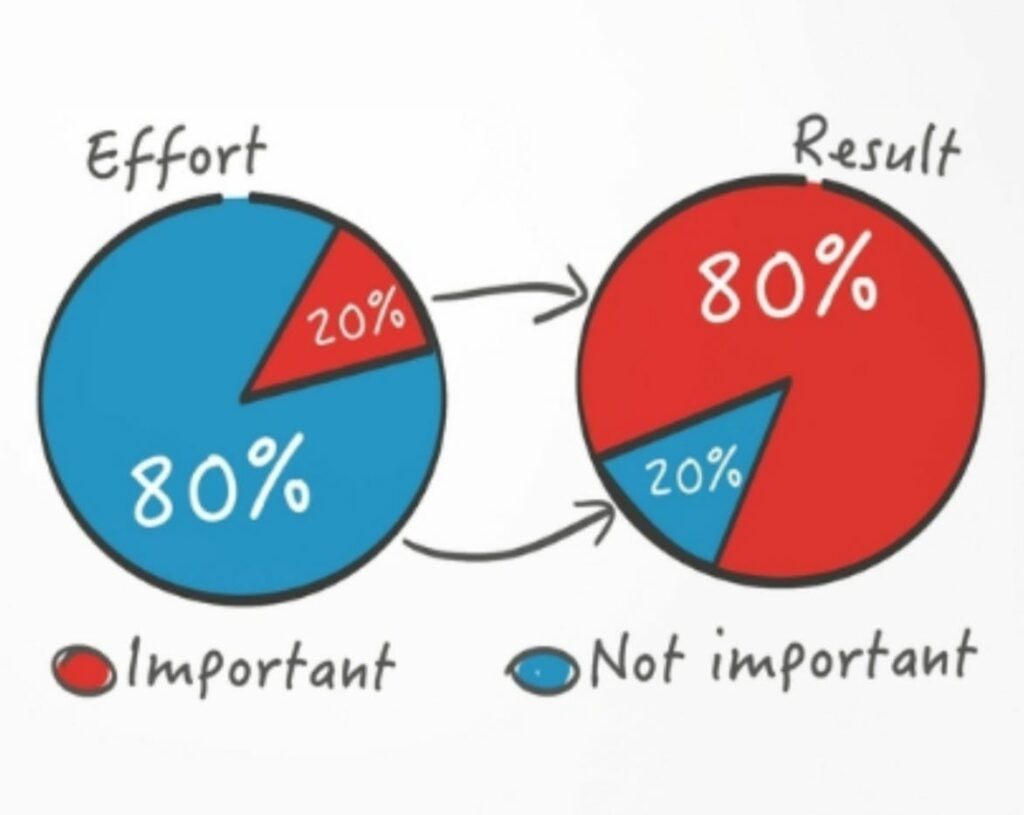
หลักการพาเรโต ซึ่งเป็นวิธีการในการบริหารจัดการประสิทธิภาพของตัวเรา โดยหลักการเขาบอกเอาไว้ว่า 80% ของผลลัพธ์มาจากความพยายาม 20% เราจึงต้องอาศัยจุดนี้ ใส่ความพยายามของเราให้ถูกจุด เพื่อผลลัพธ์ 80% หรือ มากกว่านั่นเอง
บทเรียนที่ 8: การเพิ่มสมาธิด้วยเทคนิค Pomodoro
“งานที่มีคุณค่าที่สุดที่เราสามารถทำได้ในแต่ละวัน มักจะเป็นงานที่ยากที่สุดและซับซ้อนที่สุด แต่ผลตอบแทนสำหรับการทำงานเหล่านี้ให้ผลลัพธ์มหาศาล”
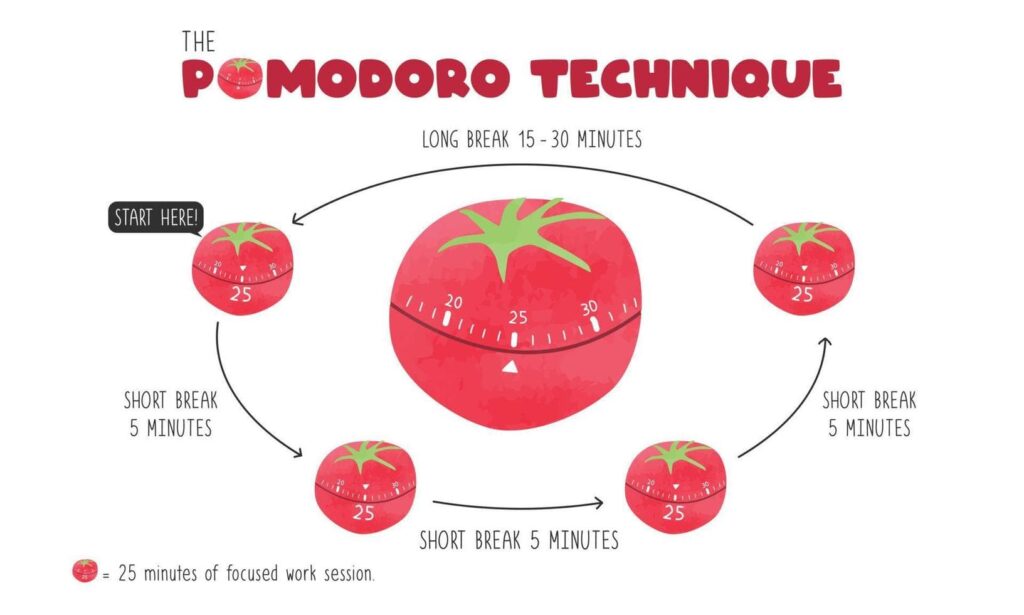
เราสามารถเพิ่มโฟกัสและการจดจ่อกับงานได้มากขึ้นด้วยเทคนิค Pomodoro ถือเป็นเทคนิคที่แพร่หลาย โดยเป็นการสลับจังหวะระหว่างช่วงเวลาที่เน้นการทำงานกับการพักเพื่อการฟื้นฟูร่างกาย ซึ่งมีการค้นพบว่าแนวทางแบบวัฏจักรนี้ช่วยเพิ่มสมาธิและประสิทธิภาพโดยรวมของเราได้ เทคนิค Pomodoro จะช่วยเปลี่ยนงานให้กลายเป็นความท้าทายที่สามารถจัดการได้ ทำให้การเพิ่มประสิทธิภาพการทำงานแบบมาราธอนเป็นไปอย่างสนุกสนาน
บทเรียนที่ 9: ปลูกฝังทัศนคติเชิงบวกเพื่อเพิ่ม Productivity
“ทุกนาทีที่เราใช้ในการวางแผน จะช่วยประหยัดเวลาในการดำเนินการได้ 10 นาที ซึ่งจะทำให้เราได้รับผลตอบแทนจากพลังงาน 1,000 เปอร์เซ็นต์!”
ปลดล็อกตัวเองสู่การมีประสิทธิภาพการทำงานด้วยทัศนคติเชิงบวก ส่งเสริมการมองโลกในแง่ดีและการมีความยืดหยุ่น สร้างสภาพแวดล้อมในการทำงานที่เอื้อต่อการบรรลุเป้าหมายของเรา
บทเรียนที่ 10: การปรับปรุงตนเองอย่างต่อเนื่อง
“ชีวิตของคุณจะดีขึ้นได้ ก็ต่อเมื่อคุณดีขึ้นเท่านั้น”
ใส่ใจกับการปรับปรุงตนเองอย่างต่อเนื่อง เรียนรู้และเข้าใจว่าการประเมินตนเองนั้นทำไปเพื่อทำให้ตนเองก้าวออกจาก Comfort Zone และ เป็นการสร้างทัศนคติที่ดี ที่เป็นบวกได้อีกด้วย ซึ่งถือเป็นเรื่องสำคัญของการขับเคลื่อนตัวเราให้ก้าวไปสู่การเติบโตทั้งในเรื่องของงานและในเรื่องการดำเนินชีวิต
………………………..
หนังสือ “Eat That Frog หรือ กินกบตัวนั้นซะ ”
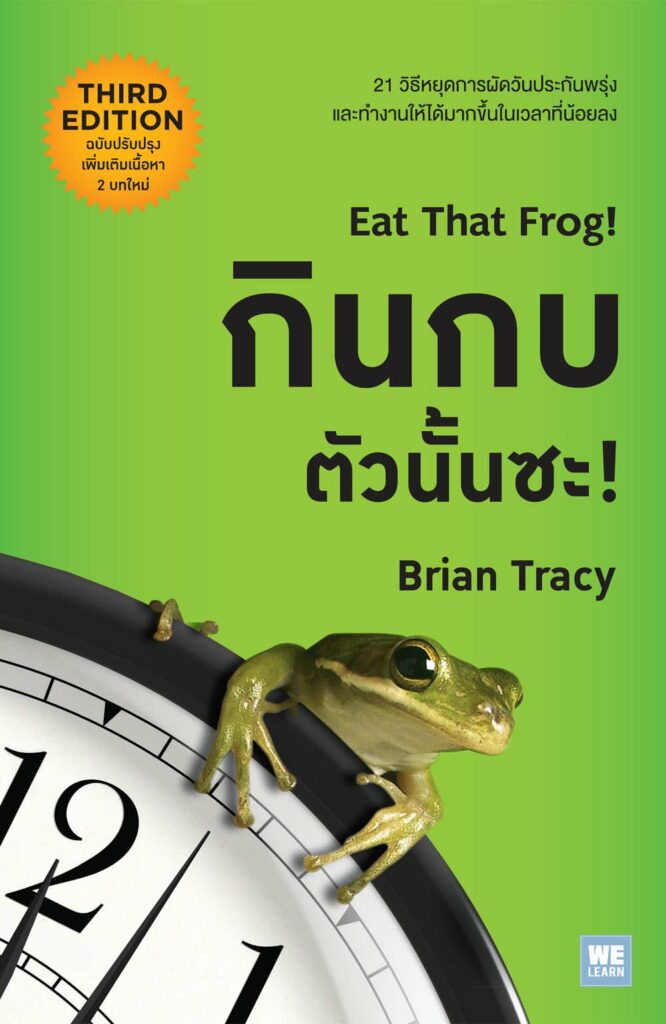
รายละเอียดเพิ่มเติม: https://shope.ee/2ApYkZNGfl
บทความแนะนำ:
Surrounded By Idiots – วิธีเอาตัวรอดท่ามกลางคนงี่เง่า







